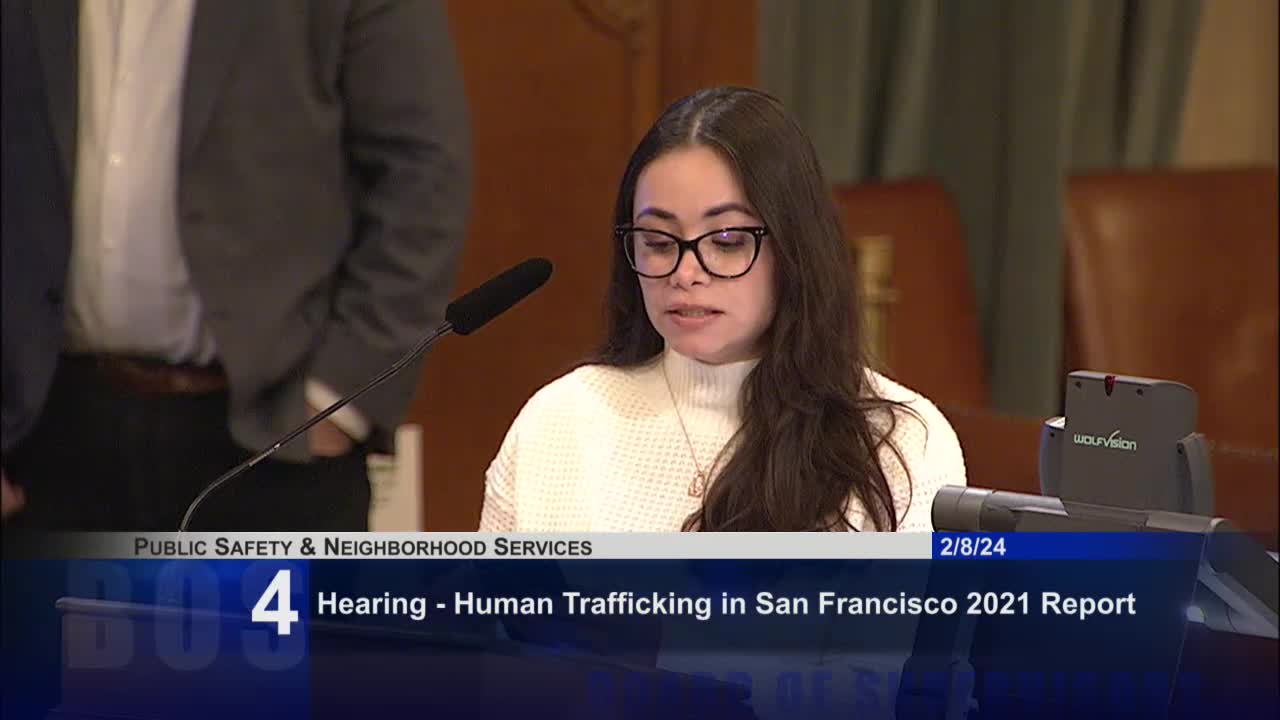San Francisco reports alarming human trafficking statistics and calls for increased resources
February 08, 2024 | San Francisco County, California

This article was created by AI summarizing key points discussed. AI makes mistakes, so for full details and context, please refer to the video of the full meeting. Please report any errors so we can fix them. Report an error »

In a recent government meeting, alarming statistics regarding human trafficking in San Francisco County were presented, highlighting a significant rise in cases and the urgent need for increased resources to combat this issue. This year, the number of survivors meeting the federal definition of severe human trafficking has surged by 24 percent, with 63 individuals identified as victims.
The data revealed that 31 percent of these survivors experienced labor trafficking, while a staggering 92 percent faced other forms of trafficking. Notably, 76 percent of the survivors were identified as Black, Brown, or belonging to other ethnic groups, and 31 percent were part of the LGBTQ community. Additionally, 34 percent of survivors reported having a mental, cognitive, or physical disability, and 11 percent were immigrants. The Tenderloin and Mission districts were highlighted as areas with the highest concentration of survivors, with 65 percent and 40 percent respectively.
These statistics underscore a critical gap in support services, as many survivors remain uncounted and unable to receive help. Advocates at the meeting emphasized the pressing need for more funding, staff, and resources to address the growing crisis effectively.
Another speaker pointed out the challenges law enforcement faces in tackling human trafficking, noting that while visible crime is prevalent, much of the trafficking occurs covertly, often organized through the internet. This highlights the complexity of the issue and the necessity for a multifaceted approach to combat human trafficking in the city.
The discussions from this meeting reflect a community grappling with the realities of human trafficking and the urgent need for action to protect vulnerable populations. As San Francisco continues to confront this crisis, the call for enhanced resources and strategic interventions remains critical to ensuring the safety and support of all residents.
The data revealed that 31 percent of these survivors experienced labor trafficking, while a staggering 92 percent faced other forms of trafficking. Notably, 76 percent of the survivors were identified as Black, Brown, or belonging to other ethnic groups, and 31 percent were part of the LGBTQ community. Additionally, 34 percent of survivors reported having a mental, cognitive, or physical disability, and 11 percent were immigrants. The Tenderloin and Mission districts were highlighted as areas with the highest concentration of survivors, with 65 percent and 40 percent respectively.
These statistics underscore a critical gap in support services, as many survivors remain uncounted and unable to receive help. Advocates at the meeting emphasized the pressing need for more funding, staff, and resources to address the growing crisis effectively.
Another speaker pointed out the challenges law enforcement faces in tackling human trafficking, noting that while visible crime is prevalent, much of the trafficking occurs covertly, often organized through the internet. This highlights the complexity of the issue and the necessity for a multifaceted approach to combat human trafficking in the city.
The discussions from this meeting reflect a community grappling with the realities of human trafficking and the urgent need for action to protect vulnerable populations. As San Francisco continues to confront this crisis, the call for enhanced resources and strategic interventions remains critical to ensuring the safety and support of all residents.
View full meeting
This article is based on a recent meeting—watch the full video and explore the complete transcript for deeper insights into the discussion.
View full meeting
